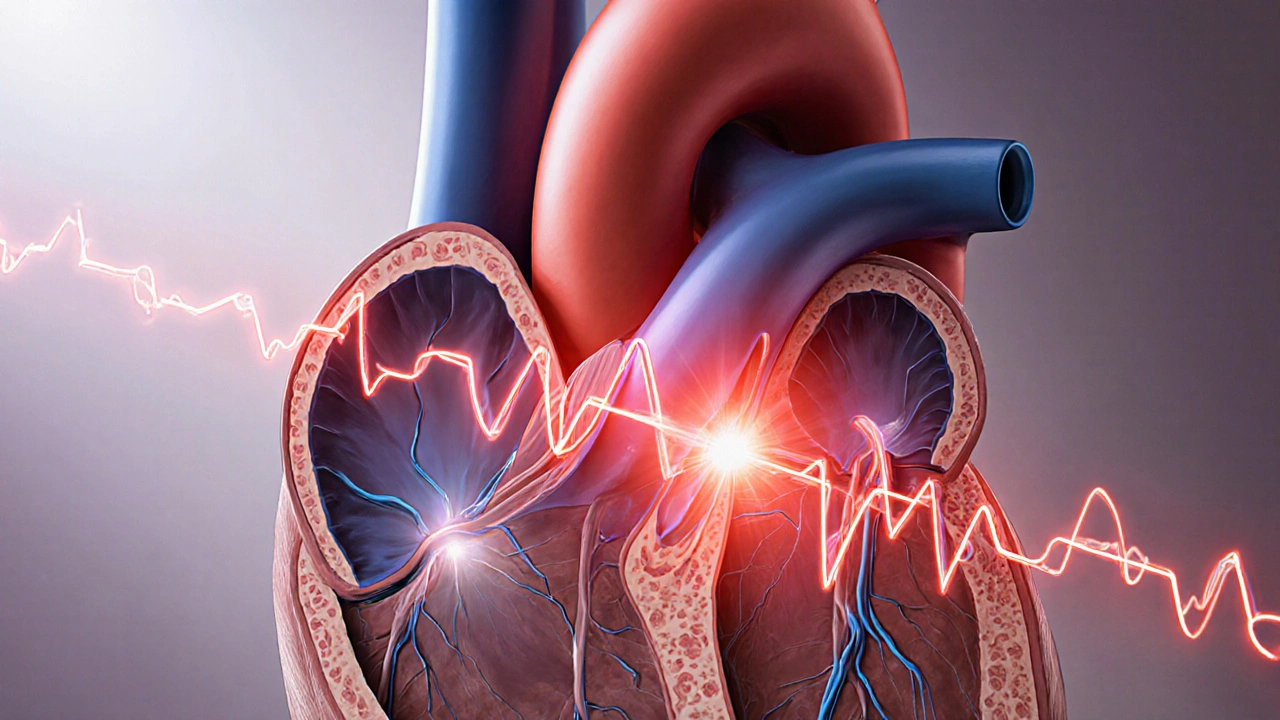Supraventricular Tachycardia (SVT)
When dealing with Supraventricular Tachycardia, a rapid heart rhythm that starts above the heart's ventricles. Also called SVT, it can make the pulse feel like a flutter or a pounding beat. Understanding SVT is the first step to spotting it early and choosing the right response.
Why SVT Happens and What to Watch For
SVT usually pops up when electrical signals in the atria fire too fast or loop back on themselves. Triggers range from caffeine, stress, and lack of sleep to underlying conditions like thyroid imbalance. Most people notice a sudden racing heartbeat, light‑headedness, or shortness of breath that lasts minutes to hours. Beta blockers, medications that slow heart rate by blocking adrenaline receptors are often the first line of defense, especially for episodes that happen often. If a medication alone doesn’t stop the rhythm, doctors may consider cardioversion, a controlled electric shock that resets the heart’s rhythm. Both approaches aim to bring the pulse back to a normal range, reducing the risk of complications like heart failure.
Supraventricular tachycardia isn’t just a fleeting inconvenience; repeated episodes can strain the heart and increase the chance of more serious arrhythmias such as atrial fibrillation. Diagnosis typically starts with an ECG or a wearable monitor that captures the fast rhythm. In some cases, an electrophysiology study maps the exact pathway causing the rapid beats, allowing for targeted catheter ablation—a procedure that permanently blocks the faulty circuit. While ablation offers a long‑term cure for many, patients who aren’t candidates may rely on lifestyle tweaks (reducing caffeine, managing stress) alongside medication. Anticoagulant therapy might be added if the person also has atrial fibrillation, to prevent blood clots. All these options—beta blockers, cardioversion, ablation, anticoagulation—are parts of a broader strategy that tailors treatment to how often SVT occurs, its severity, and the patient’s overall health.
Below you’ll find a curated set of articles that break down each of these elements in plain language. Whether you’re looking for quick symptom checks, medication guides, or step‑by‑step explanations of procedures, the collection covers the full spectrum of SVT management.

Supraventricular Tachycardia Types Explained: AVNRT, AVRT, Atrial Tachycardia & More
- by Colin Edward Egan
- on 14 Oct 2025
Learn the key SVT types-AVNRT, AVRT, atrial tachycardia, and more-how they differ, how they're diagnosed, and the best treatment options.
